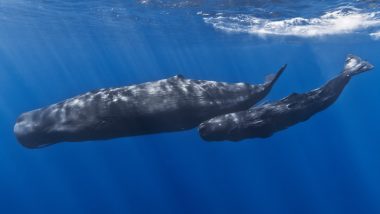The oldest sample of animal sperm concealed in a 100-million-year-old piece of amber has been found. Palaeontologists discovered the sample in the reproductive tract of an ancient female crustacean encased in resin, among one of several samples of ostracods from Myanmar. The unknown species of crustacean has been named Myanmarcypris hui, it represents modern-day mussel, an example of an ostracod. Scientists said that the discovery provides "unprecedented insights into an unexpectedly ancient and advanced instance of evolutionary specialization." Elephant Fossil, 5-8 Million Years Old, Discovered From Siwalik Sediments in UP's Saharanpur, View Pics.
Ostracods that date back some 500 million years are small animals. It can still be found in oceans, freshwater lakes and rivers. Scientists analyzed several ostracod specimens to study their limbs and reproductive organs. In the process, scientists discovered ripe sperm inside the sperm receptacles of a female crustacean. It would have been stored so that once her eggs had matured it can be released. The discovery marks the oldest fossil in which sperm cell have been identified.
He Wang, from the Chinese Academy of Sciences in Nanjing, said in a statement, "This female must have mated shortly before being encased in the resin." According to the findings published in the Royal Society journal on Wednesday. the results "double the age of the oldest unequivocal fossil animal sperm". Researchers also added that the evidence of the use of giant sperm 100 million years ago is proof of a successful long term reproductive strategy. Giant 120-Million-Year Old Crocodile That Walked on Two Feet Like a Dinosaur Found by Scientists in South Korea.
Rarely has been specimens of fossilised sperms found. The oldest known ostracod sperm is 17 million years old, and the previous record age of 50 million years was held by a worm species. While the majority of male animals produce large numbers of small sperm, ostracods, in this finding, small numbers of oversized sperm, with long motile tails were found.
Renate Matzke-Karasz, a geobiologist at Ludwig-Maximilians-Universitaet in Munich who was involved in the morphological analysis of the specimens, said in a statement, "The complexity of the reproductive system in these specimens raises the question of whether the investment in giant sperm cells might represent an evolutionarily stable strategy."
(The above story first appeared on LatestLY on Sep 17, 2020 06:26 PM IST. For more news and updates on politics, world, sports, entertainment and lifestyle, log on to our website latestly.com).













 Quickly
Quickly




















